- BIOMATERIAL AGGREGATE/CEMENT COMPLEX, AND CEMENT CURED BODY
- BIOCOMPATIBLE MATERIAL
- TITANIUM ALLOY INCORPORATED WITH BORON ADDED
- METHOD FOR MANUFACTURING BIOMATERIAL WITH CONTROLLED SURFACE SHAPE
- ARTIFICIAL LYMPH NODE
- BIOMATERIAL
- Ti-Sc SHAPE MEMORY ALLOY
- METHOD FOR FORMING ARTIFICIAL BONE
- BIOMATERIAL
- BIOMATERIAL
- BIOMATERIAL, CELL CULTURE APPARATUS, ARTIFICIAL TISSUE, AND ARTIFICIAL ORGAN
- BIOMATERIAL MEMBER
- HIGH STRENGTH / HIGH TOUGHNESS ZIRCONIA SINTERED MATERIAL AND BIOMATERIAL USING THE SAME
- BIOMATERIAL AND ANTIADHESIVE MATERIAL USING IT
- PRODUCING METHOD OF BIOGLASS MATERIAL FOR DENTISTRY
- LINEAR OCTAPOLYPHOSPHATE AND ITS MANUFACTURING METHOD
BIOMATERIAL AGGREGATE/CEMENT COMPLEX, AND CEMENT CURED BODY
| (11)Publication number : | 2004-329458 |
| (43)Date of publication of application : | 25.11.2004 |
| (51)Int.CI. |
A61L 27/00 A61F 2/28 |
| (21)Application number : | 2003-127616 | (71)Applicant : | NATIONAL INSTITUTE OF ADVANCED INDUSTRIAL & TECHNOLOGY ISHIGURO NAOKI MATSUYAMA YUKIHIRO |
| (22)Date of filing : | 02.05.2003 | (72)Inventor : | TERAOKA HIROSHI ISHIGURO NAOKI MATSUYAMA YUKIHIRO |
|
Abstract: PROBLEM TO BE SOLVED: To provide a biomaterial aggregate/cement complex, and a cement cured body, or the like. SOLUTION: In the aggregate particle/cement complex containing biocompatible material aggregate particles, (1) the aggregate particles are made of calcium phosphate ceramics or biodegradable plastics; (2) the particle diameter of the aggregate is from 151 μm to 5 mm; (3) the quantity of contained aggregate particles in the cement is from 51 to 90 vol%; and (4) the cement is a self-curing type calcium phosphate cement. An infusion/filler for organisms is made of the aggregate particle/cement complex. A tube-filled object consists of the infusion/filler filled in a tube whose one end or both ends are closed. An infusion filling material spouting device consists of an outlet formed in a part of the tube-filled object. The cement cured body is made by hydrating and curing the cement part of the aggregate particle/cement complex. A method for controlling mechanical characteristics of the self-curing type calcium phosphate cement hydrating/curing body is adding the biomaterial aggregate particles to the self-curing type calcium phosphate cement by 51-90 vol%. |
BIOCOMPATIBLE MATERIAL
| (11)Publication number : | 2004-298223 |
| (43)Date of publication of application : | 28.10.2004 |
| (51)Int.CI. A61L 33/10 A61F 2/06 A61L 27/00 A61L 29/00 A61L 31/00 A61L 33/00 A61M 1/16 C08L 33/14 C08L101/00 |
| (21)Application number : | 2003-091491 | (71)Applicant : | TERUMO CORP |
| (22)Date of filing : | 28.03.2003 | (72)Inventor : | SHIMURA KENICHI ANZAI TAKAKIMI |
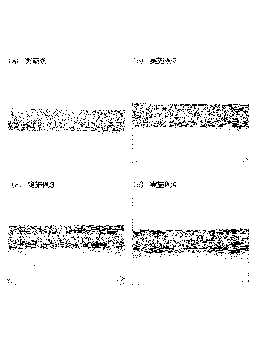 Abstract:
Abstract:PROBLEM TO BE SOLVED: To provide a biocompatible composition which constrains adhesion and activation of a blood platelet sufficiently, can stably keep a tissue-derived biomaterial with an anticoagulant activity existing for a long time, has excellent safety, is little restricted in application and can be produced simply so that production cost is low, and a biocompatible medical equipment using the same. SOLUTION: The biocompatible composition includes (A) the tissue-derived biomaterial having the anticoagulant activity and (B) a nonionic polymer with a glass transition point of 300K or lower, wherein the above tissue-derived biomaterial and the above nonionic polymer are not combined chemically. |
TITANIUM ALLOY INCORPORATED WITH BORON ADDED
| (11)Publication number : | 2004-277873 |
| (43)Date of publication of application : | 07.10.2004 |
| (51)Int.CI. | C22C 14/00 |
| (21)Application number : | 2003-112159 | (71)Applicant : | NIPPON SANGYO KAGAKU KENKYUSHO |
| (22)Date of filing : | 12.03.2003 | (72)Inventor : | YOSHIMURA HIROBUMI NAKAHIGASHI JUN |
|
Abstract: PROBLEM TO BE SOLVED: To solve the problem that, though a titanium alloy is used for various plants and apparatuses for conveyance because of its excellent specific strength and corrosion resistance, and further, it is recently used as a biomaterial because of its excellent bio-compatibility, but, the casting of an α+βtype titanium alloy is composed of large crystal grains, and its strength is low, and to improve the superplastic elongation of an alloy rolled-annealed material by using a superplastic working method as a plastic working method for a hardly workable material such as an α+βtype titanium alloy rolling-annealing material. SOLUTION: The titanium alloy is composed in such a manner that a suitable amount of boron is added on the fusion of an α+β type titanium alloy ingot. Thus, the solidified structure is converted into equiaxed fine grains, so that its mechanical properties (strength) can be improved. Further, as for a countermeasure for improving the superplastic elongation, a suitable amount of boron is added to an α+β type titanium alloy, and, working and heat treatment are performed. As a result, plastic working for a component with a complicated shape is facilitated by the superplastic working using the above properties, so that the expansion of the application of the titanium alloy can be expected. |
METHOD FOR MANUFACTURING BIOMATERIAL WITH CONTROLLED SURFACE SHAPE
| (11)Publication number : | 2004-267440 |
| (43)Date of publication of application : | 30.09.2004 |
| (51)Int.CI. |
A61F 2/32 A61C 8/00 A61L 27/00 |
| (21)Application number : | 2003-061664 | (71)Applicant : | MIZUHO CO LTD |
| (22)Date of filing : | 07.03.2003 | (72)Inventor : | YAMAGUCHI NORIO OHASHI OSAMU |
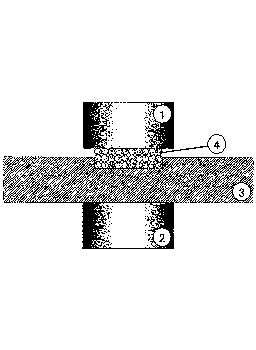 Abstract:
Abstract:PROBLEM TO BE SOLVED: To provide a method for manufacturing an implant material having an optional pore shape on a metal surface. SOLUTION: Materials to form a porous body such as metal powder or metal wires are arranged on the surface of a metallic member (titan or stainless steel, or the like) which serves as a base material, and electric power is supplied directly to the materials. When the materials to form the porous body are joined by utilizing local heat generated by this power supply, a porous material having optional pores on the surface is formed. Also, when metal foils having the holes of different sizes are stacked and joined by supplying power, the implant material 3 having the holes expanded in its inside is prepared. |
ARTIFICIAL LYMPH NODE
| (11)Publication number : | 2004-255110 |
| (43)Date of publication of application : | 16.09.2004 |
| (51)Int.CI. A61L 27/00 A61F 2/02 A61K 35/26 A61P 37/00 A61P 37/02 |
| (21)Application number : | 2003-052088 | (71)Applicant : | SANGAKU RENKEI KIKO KYUSHU:KK |
| (22)Date of filing : | 27.02.2003 | (72)Inventor : | SUEMATSU SACHIKO WATANABE TAKESHI |
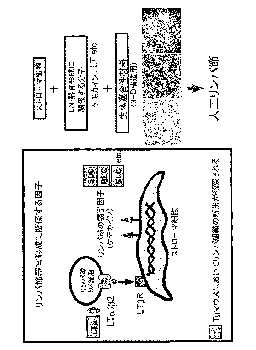 Abstract:
Abstract:PROBLEM TO BE SOLVED: To provide an artificial lymph node. SOLUTION: The artificial lymph node comprises a cytokine, a stroma cell, and a polymer biomaterial. Alternatively, the artificial lymph node comprises a stroma cell and a polymer biomaterial capable of producing the cytokine. |
BIOMATERIAL
| (11)Publication number : | 2004-215712 |
| (43)Date of publication of application : | 05.08.2004 |
| (51)Int.CI. | A61L 27/00 |
| (21)Application number : | 2003-003691 | (71)Applicant : | TAKI CHEM CO LTD |
| (22)Date of filing : | 09.01.2003 | (72)Inventor : | OKADA TAKAO IMAMURA YUKARI |
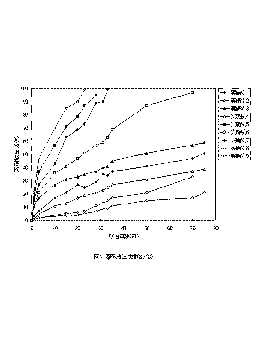 Abstract:
Abstract:PROBLEM TO BE SOLVED: To provide a biomaterial, taking polymer composition having excellent biodegradability and biocompatibility as a base and continuously emitting medicine or bioactive substance during a fixed period of time. SOLUTION: This biomaterial is formed of copolymer prepared by the reaction of an acrylic acid system polymer and/or methacrylic acid polymer, lactone compound and/or hydroxy carboxylic acid compound, and an ethylene oxide and/or propylene oxide compound. This biomaterial has excellent moldability, flexibility, mechanical strength and shape retaining property, prevents entering of another tissue before prostheses for organism missing part or regeneration of boitissue, and prevents adhesion, promotes regeneration of biotissue, and the biomaterial is applicable as biodegradable absorptive support suitable for cell proliferation. |
Ti-Sc SHAPE MEMORY ALLOY
| (11)Publication number : | 2004-204245 |
| (43)Date of publication of application : | 22.07.2004 |
| (51)Int.CI. | C22C 14/00 |
| (21)Application number : | 2002-370999 | (71)Applicant : | NEC TOKIN CORP NISHIDA MINORU |
| (22)Date of filing : | 20.12.2002 | (72)Inventor : | UCHIYAMA HIROAKI YAMAUCHI KIYOSHI NISHIDA MINORU MAEJIMA TAKASHI |
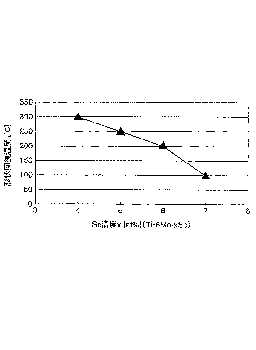 Abstract:
Abstract:PROBLEM TO BE SOLVED: To provide a new Ti-based shape memory alloy where Ni whose use as a biomaterial is mostly avoided is excluded from the elements constituting the alloy. SOLUTION: The Ti-Sc shape memory alloy is a Ti-Sc-X alloy and has a composition consisting of, by atom, 1 to 30% Sc, 1 to 15% X (where X is one element from V, Cr, Zr, Nb, Mo, Hf and Ta or a combination thereof) and the balance Ti and inevitable impurities. |
METHOD FOR FORMING ARTIFICIAL BONE
| (11)Publication number : | 2004-202126 |
| (43)Date of publication of application : | 22.07.2004 |
| (51)Int.CI. |
A61F 2/28 A61L 27/00 B28B 1/32 B29C 67/00 |
| (21)Application number : | 2002-377836 | (71)Applicant : | NEXT:KK SINTO BRATOR CO LTD |
| (22)Date of filing : | 26.12.2002 | (72)Inventor : | SUZUKI SHIGEKI NISHIMURA KAZUTOSHI |
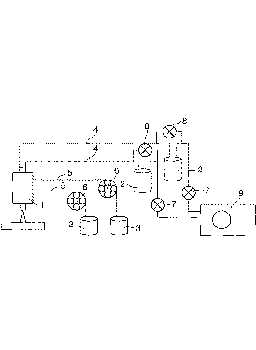 Abstract:
Abstract:PROBLEM TO BE SOLVED: To provide a method for forming an artificial bone or an artificial cartilage which is made of biomaterials, very close to natural bones in appearance and inner structure, highly compatible with a patient who has received the implantation, and capable of promoting bone regeneration. SOLUTION: A powder biomaterial and a liquid biomaterial are sent to near the nozzle tip of a spraying device through separate passages. The mixture of the biomaterials is jetted out of the nozzle to a solid surface. This lamination mixed with the powder biomaterial and the liquid biomaterial is repeatedly made on the attachment surface to form multiple attachment layers, whereby an artificial bone or an artificial cartilage of three-dimensional structure can be formed. |
BIOMATERIAL
| (11)Publication number : | 2004-187846 |
| (43)Date of publication of application : | 08.07.2004 |
| (51)Int.CI. |
A61F 2/28 A61F 2/06 A61L 27/00 |
| (21)Application number : | 2002-357979 | (71)Applicant : | TOSHIBA CERAMICS CO LTD MMT:KK |
| (22)Date of filing : | 10.12.2002 | (72)Inventor : | NAI AKIRA IMURA KOICHI AIBA YOSHIRO MAZAKI OSAMU |
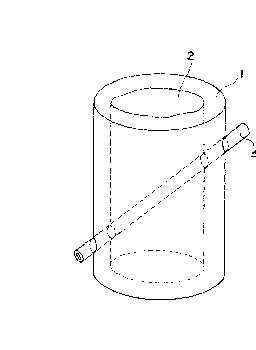 Abstract:
Abstract:PROBLEM TO BE SOLVED: To provide a biomaterial which causes rapid bone formation inside a bone filler material when used for filling a large bony defective site and is appropriate for using as the bone filler material for healing injuries and sicknesses quickly. SOLUTION: The biomaterial has one or a plurality of artificial blood vessels 3 which penetrate the inside of a porous body 2 and are formed in the porous body 2, having communicating openings connected to the outside at communicating parts with at least 10μm of a opening diameter, having the volume of the communicating openings of at least 20% of the total volume of the biomaterial, and made of a calcium phosphate based material. |
BIOMATERIAL
| (11)Publication number : | 2004-141630 |
| (43)Date of publication of application : | 20.05.2004 |
| (51)Int.CI. A61L 27/00 A61K 6/093 // A61C 13/08 A61F 2/28 A61F 2/30 |
| (21)Application number : | 2003-184848 | (71)Applicant : | CONTAMINATION CONTROL SERVICE:KK |
| (22)Date of filing : | 27.06.2003 | (72)Inventor : | SHINDO TOYOHIKO |
| (30)Priority | |||||
| Priority number : | 2002246678 | Priority date : | 27.08.2002 | Priority country : | JP |
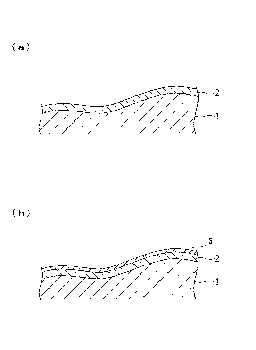 Abstract:
Abstract:PROBLEM TO BE SOLVED: To provide a biomaterial favorably generating apatite on the surface and having excellent bio-compatibility, a film having an apatite forming ability constituting the biomaterial, and a coating liquid for obtaining the film having the apatite forming ability for forming the film having the apatite forming ability by simple operation without expensive equipment. SOLUTION: This biomaterial is obtained as follows. A coating liquid containing polysilazane and calcium compound is applied to the upper side of a base material 1 made of metal or ceramics, and heated to form the film 2 having apatite forming ability. A biomaterial where the film 2 having apatite forming ability is formed may be dipped in a pseudo-body fluid to previously form an apatite layer on the film 2. |
BIOMATERIAL, CELL CULTURE APPARATUS, ARTIFICIAL TISSUE, AND ARTIFICIAL ORGAN
| (11)Publication number : | 2004-141301 |
| (43)Date of publication of application : | 20.05.2004 |
| (51)Int.CI.
A61L 27/00 A61F 2/06 A61F 2/10 A61F 2/28 D03D 1/00 D03D 3/02 D03D 15/00 D04B 1/14 D04B 1/22 D04B 21/00 D04B 21/20 D04C 1/12 D06M 15/01 |
| (21)Application number : | 2002-308128 | (71)Applicant : | TECHNO NETWORK SHIKOKU CO LTD |
| (22)Date of filing : | 23.10.2002 | (72)Inventor : | YAMASHITA KIKUJI |
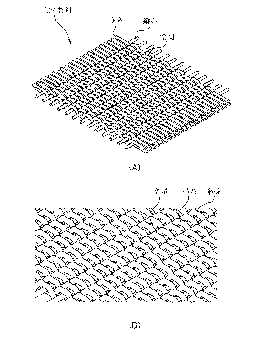 Abstract:
Abstract:PROBLEM TO BE SOLVED: To provide a biomaterial which is provided with extensibility and flexibility of a tissue, which has a tissue structure close to a biological tissue and which has no unnatural feeling and rejection even when being transplanted to a living body, and to provide a cell culture apparatus, an artificial tissue and an artificial organ. SOLUTION: The biomaterial, which is used by embedding to the living body, is formed by knitting yarn. Since cells and blood vessels in the tissue of the living body can freely enter the biomaterial when the biomaterial is embedded into the living body, affinity can be improved and reproduction of the tissue is accelerated. In addition, the biomaterial can easily be fixed to surrounding tissues, and which is extended and reduced only in the same direction as that of an adaptable tissue and has an extending and reducing quantity equal to that of the adaptable tissue, thereby it is possible to prevent occurrence of the unnatural feeling, a pain and malfunction. Furthermore, until the tissue at a place where the biomaterial is adapted is reproduced completely, the biomaterial surely functions as a scaffold. |
BIOMATERIAL MEMBER
| (11)Publication number : | 2004-089580 |
| (43)Date of publication of application : | 25.03.2004 |
| (51)Int.CI.
A61F 2/00 A61L 27/00 C22C 9/00 C22C 13/00 C22C 14/00 C22C 16/00 C22C 18/00 C22C 19/07 C22C 38/00 C22C 38/38 C22C 45/10 |
| (21)Application number : | 2002-258120 | (71)Applicant : | NAKAMURA KOZO ONISHI ISAO NATIONAL INSTITUTE FOR MATERIALS SCIENCE YKK CORP |
| (22)Date of filing : | 03.09.2002 | (72)Inventor : | NAKAMURA KOZO ONISHI ISAO HANAWA TAKAO HIROMOTO SACHIKO MARUYAMA NORIO ARAI TOSHIO OFUNA HITOSHI ISHIDA HIROSHI |
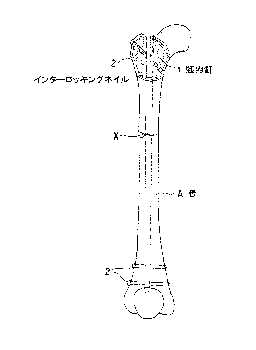 Abstract:
Abstract:PROBLEM TO BE SOLVED: To provide a biomaterial member which is free from Ni as an allergy source, excellent in corrosion resistance to biological fluid, has high strengths and low elasticity, is hardly reactive with an organism, can be easily removed after completion of treatment, and hardly causes problems such as so-called stress shield, lung infarction when it is used as an intramedullary nail. SOLUTION: This biomaterial comprises an amorphous alloy with polarization resistance not lower than 4×106 Ωcm2 in deaerated Hanks liquid and an eroding potential-pitting potential window not lower than 0.25 V. The biomaterial comprises an amorphous material with Young's modulus not higher than 100 GPa in a preferable condition. Such a biomaterial is optimum for an artificial bone material for an intramedullary nail 1 fixed by an interlocking nail (laterally stopping screw) 2 after it is burried into a bone A, a bone setting plate, a bone fixing screw, or the like. |
HIGH STRENGTH / HIGH TOUGHNESS ZIRCONIA SINTERED MATERIAL AND BIOMATERIAL USING THE SAME
| (11)Publication number : | 2004-075532 |
| (43)Date of publication of application : | 11.03.2004 |
| (51)Int.CI. |
C04B 35/48 A61C 13/08 A61L 27/00 |
| (21)Application number : | 2003-283296 | (71)Applicant : | KOBE STEEL LTD |
| (22)Date of filing : | 31.07.2003 | (72)Inventor : | KUDO TAKAHIRO MATSUSHITA TOMIHARU NAKAHIRA ATSUSHI MURAKAMI TAKAYUKI |
| (30)Priority | |||||
| Priority number : | 2002224584 | Priority date : | 01.08.2002 | Priority country : | JP |
|
Abstract: PROBLEM TO BE SOLVED: To provide a high strength and high toughness zirconia sintered material free from the deterioration of the characteristics even under an wet atmosphere. SOLUTION: The zirconia sintered material is formed by dispersing zirconia containing 8-15 mol% CeO2 and zirconia containing 2-5 mol% Y2O3 so that the volume ratio of zirconia containing CeO2 to the zirconia containing Y2O3 is controlled to be (9:1) to (6:4). In the sintered material, ≤20 vol.% Al2O3 and/or 0.01-3.0 vol.% MgO or CaO can be incorporated. |
BIOMATERIAL AND ANTIADHESIVE MATERIAL USING IT
| (11)Publication number : | 2004-065780 |
| (43)Date of publication of application : | 04.03.2004 |
| (51)Int.CI. | A61L 27/00 |
| (21)Application number : | 2002-232040 | (71)Applicant : | GUNZE LTD JMS CO LTD |
| (22)Date of filing : | 08.08.2002 | (72)Inventor : | MATSUDA SHOJIRO IKADA YOSHITO FUJIMURA KENJI |
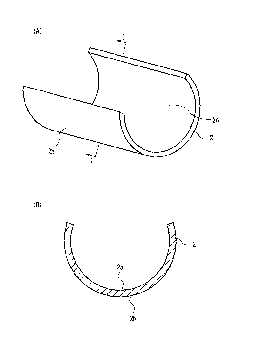 Abstract:
Abstract:PROBLEM TO BE SOLVED: To provide a biomaterial which is excellent in biocompatibility and biological absorbability, and handleability. SOLUTION: The biomaterial consisting of a crosslinked gelatin film can be produced by preparing a gelatin film by gelation and drying of a gelatin solution and by giving crosslinking treatment to both faces in different conditions. Since the crosslinked gelatin film is made to a curved form by immersing in the solution because the crosslinking treatment is given to both faces in different conditions, the biomaterial consisting of the crosslinked gelatin film of this kind can be employed as an antiadhesive material which is easy to wind around a tendon, a nerve, etc., and is excellent in the handling properties. |
PRODUCING METHOD OF BIOGLASS MATERIAL FOR DENTISTRY
| (11)Publication number : | 2004-065449 |
| (43)Date of publication of application : | 04.03.2004 |
| (51)Int.CI. A61C 5/04 A61C 13/00 A61K 6/027 A61K 6/033 C03C 10/00 |
| (21)Application number : | 2002-227452 | (71)Applicant : | NATIONAL TAIWAN UNIV |
| (22)Date of filing : | 05.08.2002 | (72)Inventor : | RIN HOKI |
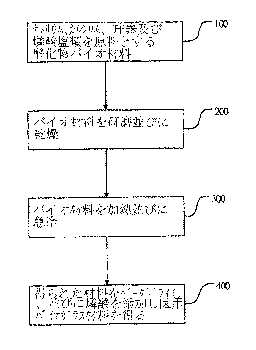 Abstract:
Abstract:PROBLEM TO BE SOLVED: To provide a producing method of a bioglass material for dentistry. SOLUTION: In this producing method, an oxide biomaterial of which the raw materials are sodium, calcium, silicon and phosphate is ground and dried and then heated and cooled down quickly. The material thus obtained is dried by baking and a phosphoric acid is added thereto. Thereby the bioglass material is obtained. A prosthetic agent for a tooth crack is provided by mixing a bioglass powder with the phosphoric acid and the agent can be mass-produced by a process requiring neither too expensive equipment nor too high cost. By sealing a minute crack of a tooth with the bioglass combined with a carbon dioxide laser, the propagation of the crack can be prevented. |
LINEAR OCTAPOLYPHOSPHATE AND ITS MANUFACTURING METHOD
| (11)Publication number : | 2004-035348 |
| (43)Date of publication of application : | 05.02.2004 |
| (51)Int.CI. |
C01B 25/41 C01B 25/40 C01B 25/44 C01B 25/45 |
| (21)Application number : | 2002-196679 | (71)Applicant : | SHIMONOSEKI MITSUI CHEMICALS INC |
| (22)Date of filing : | 05.07.2002 | (72)Inventor : | WATANABE MAKOTO |
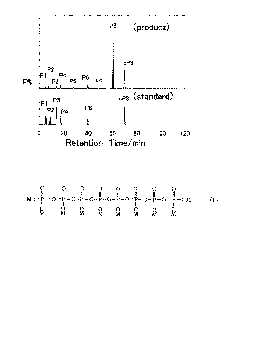 Abstract:
Abstract:PROBLEM TO BE SOLVED: To provide a linear polyphosphate of a higher-degree polymerization, which is useful as a biomaterial, an electronic material, optical ceramics, pharmaceuticals, and a raw material for pharmaceuticals. SOLUTION: An octapolyphosphate, which is a new polyphosphate with a structure expressed by the formula (1), is provided. The octapolyphosphate is obtained by selectively ring-opening a cyclooctaphosphate by hydrolyzing it with a hydroxide of an alkali metal, etc. In formula (1), M denotes at least one kind of alkali or alkaline earth metal, provided that in the case of an alkaline earth metal, the number of moles of M is 1/2. |
